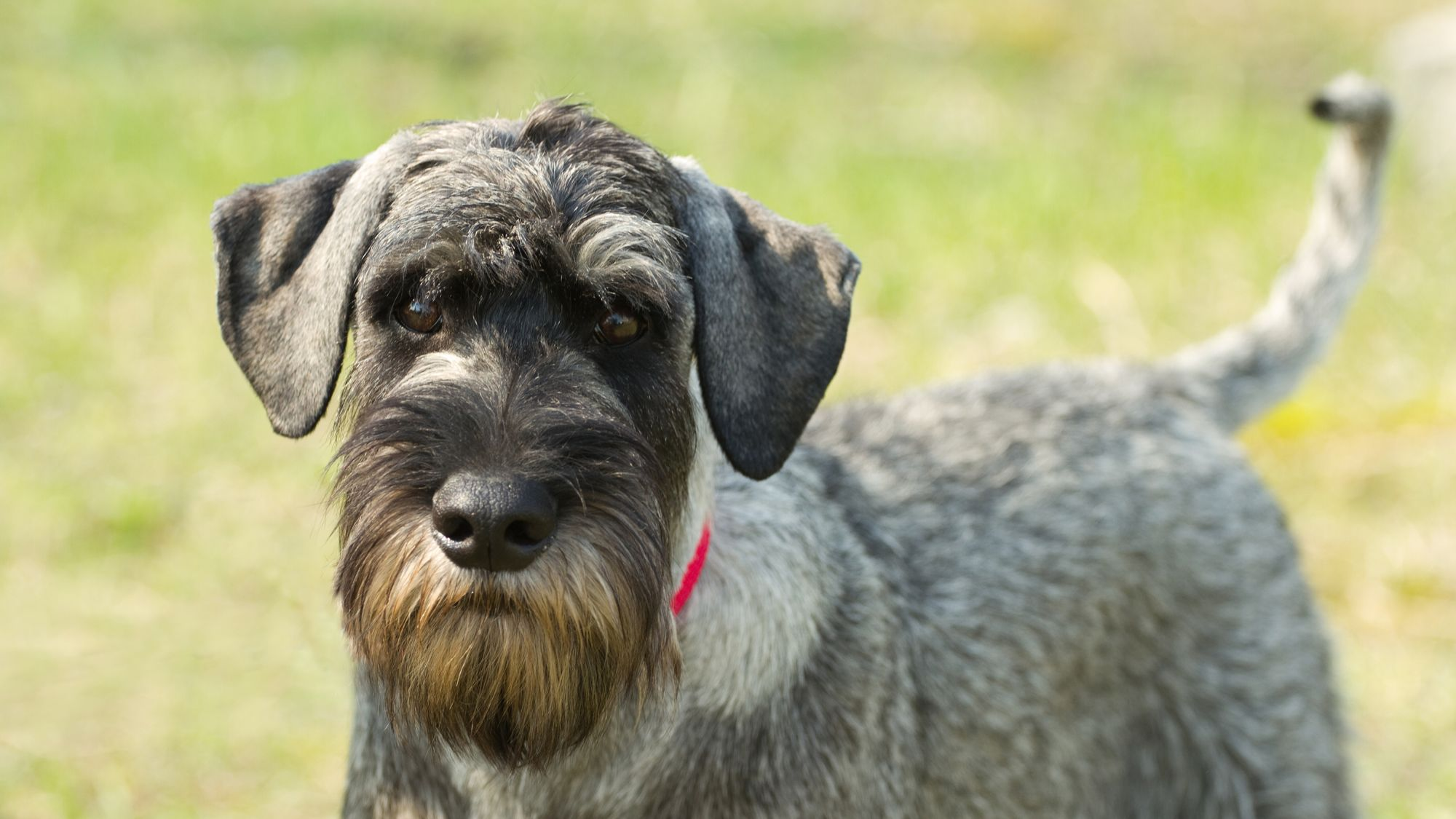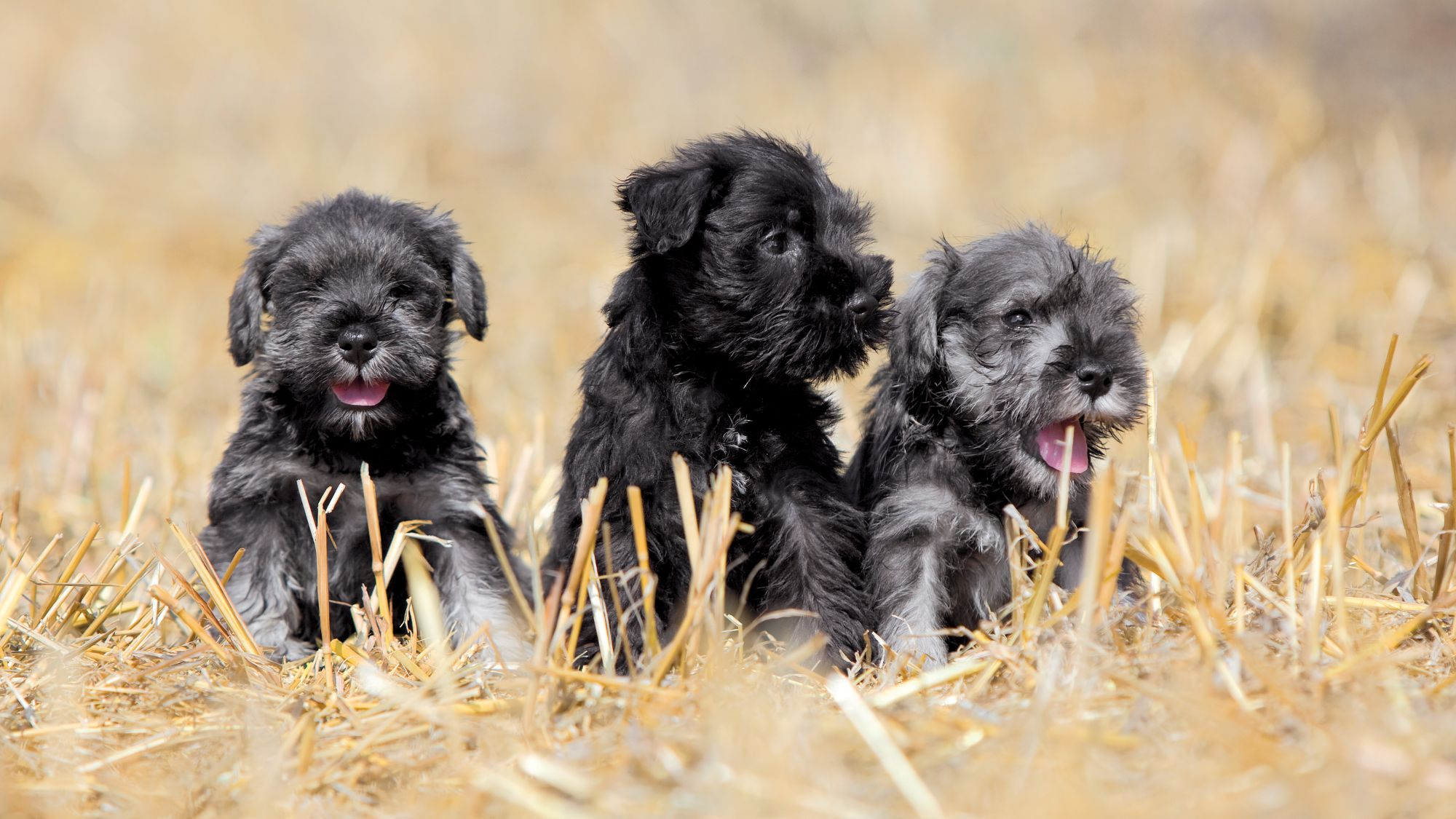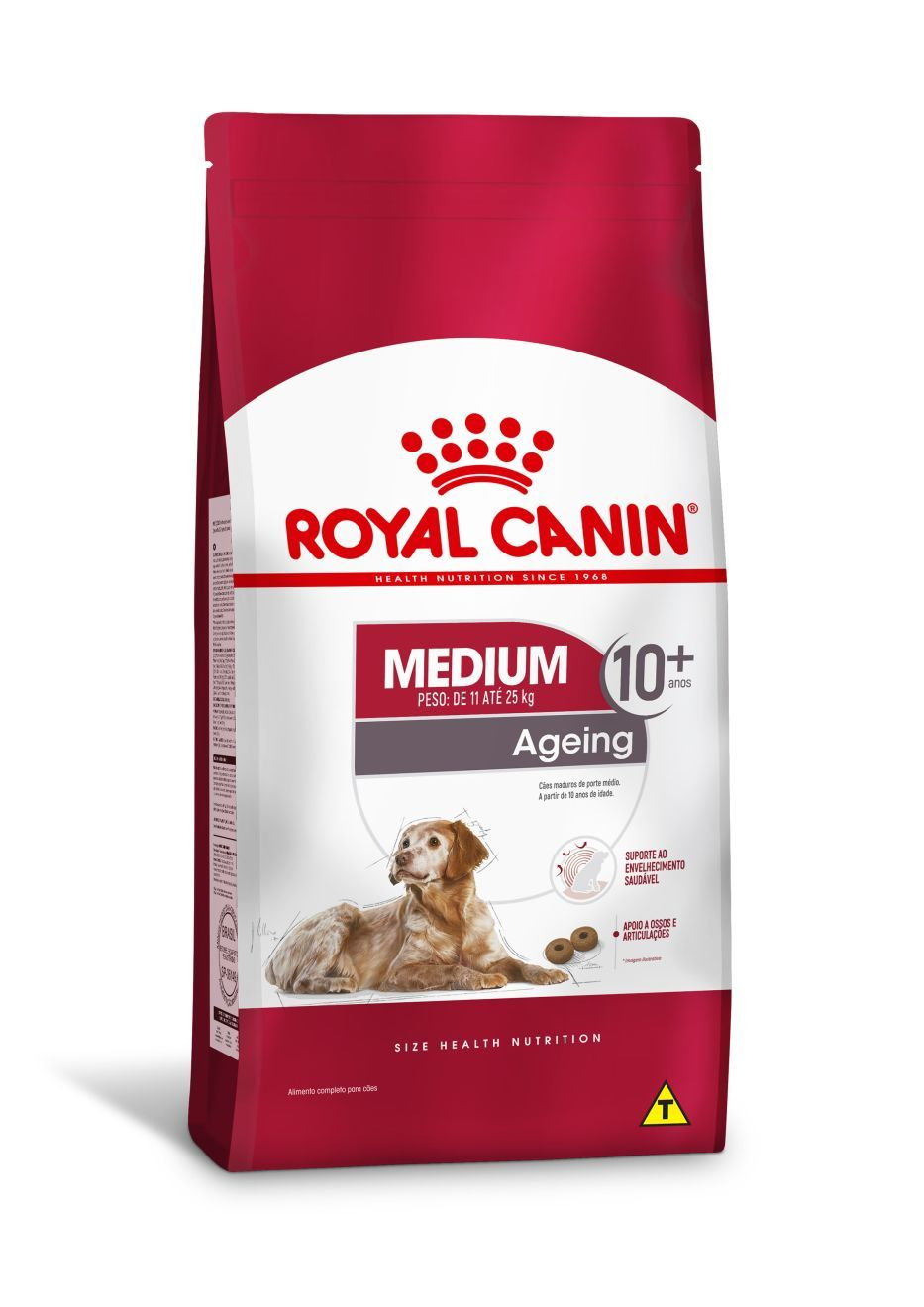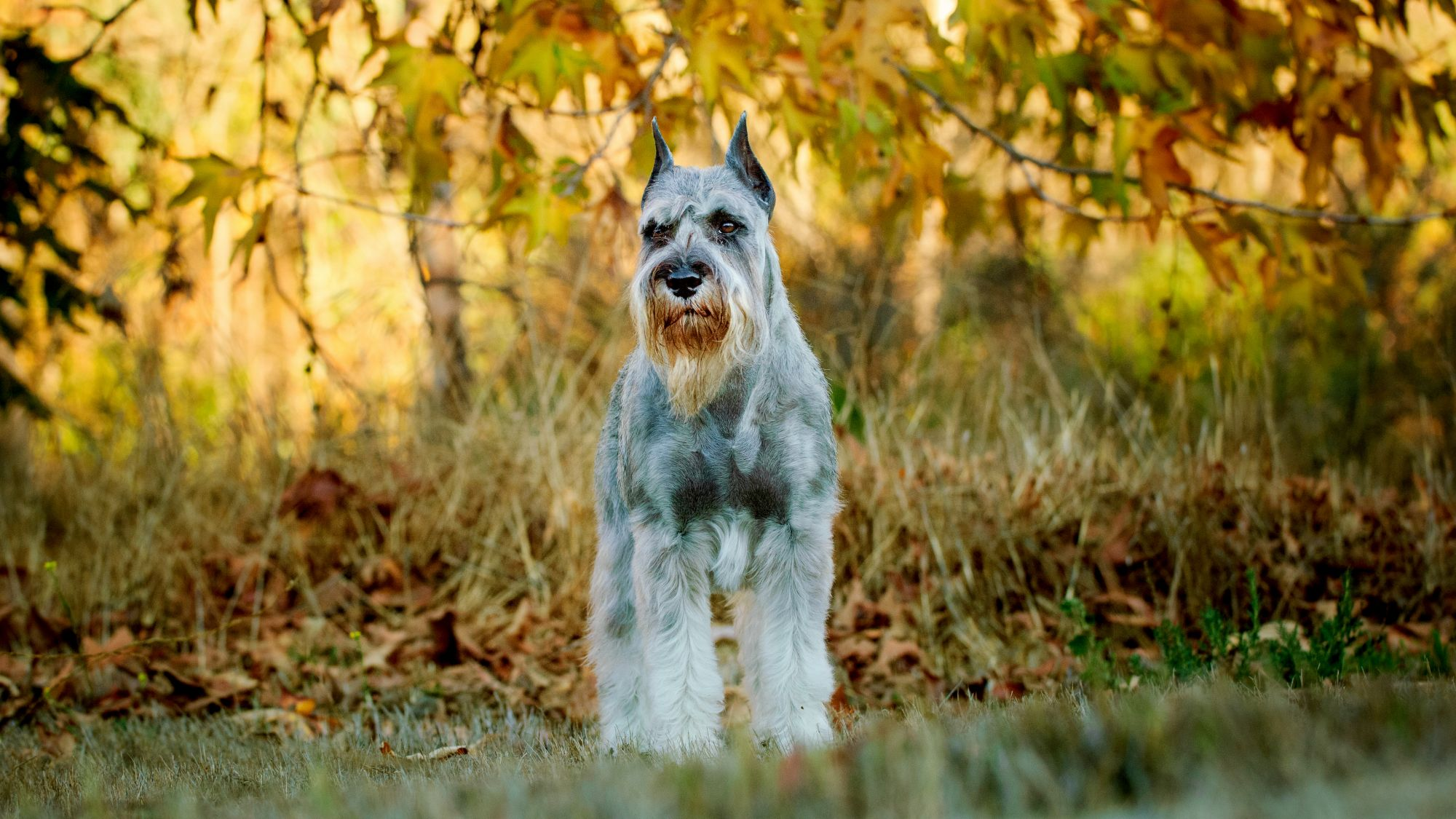Let's talk Standard Schnauzers
There’s really nothing standard about the Standard Schnauzer breed, except for the name. The original member of the universally lovable Schnauzer family has a distinctive, aristocratic bearing, thanks to that bushy beard, arched eyebrows and high-set ears. Once trained, these sociable and affectionate dogs make lovely family pets, even for apartment-dwellers, as long as they get plenty of exercise. They may have left their original vocation as rat-catchers behind them but they still have plenty of energy that needs burning off somehow.
Official name: Standard Schnauzer
Other names: Originally known as a Wire-haired Pinscher
Origins: Germany
Tendenz zum Sabbern
Tendenz zum Haaren
Energielevel (hoch, niedrig, mittel) *
Verträglichkeit mit anderen Haustieren
Warmes Wetter
Geeignet für die Haltung in der Wohnung
Haustier *
Kann allein bleiben
| Männlich | Weiblich |
|---|---|
| Größe | Größe |
| 47 - 49.5 cm | 44.5 - 47 cm |
| Gewicht | Gewicht |
| 14 - 20 kg | 14 - 20 kg |
| Lebensabschnitt | |
|---|---|
| Erwachsenenalter | |
| 1 to 7 years | |
| Reifes Alter | Seniorenalter |
| 7 to 10 years | From 10 years |
| Babyalter | |
| Birth to 2 months | |

Get to know the Standard Schnauzer
All you need to know about the breed
Dapper-looking Standard Schnauzers, with their twinkly-eyed, inquisitive expressions and trademark shaggy beards, are the original Schnauzers, the breed from which Miniature Schnauzers and Giant Schnauzers were developed. Intelligent and playful, they originated in Germany in the Middle Ages. These wonderfully hairy all-rounders were developed to work on farms and around stables (they were comfortable around horses), catching rats and acting as a guard dog protecting the herd, and their humans too.
Nowadays the Standard Schnauzer, playful and sometimes mischievous by nature, has found another vocation as a family dog – they are prized for their affectionate natures, ease of training – not to mention their low levels of shedding: Your soft furnishings will thank you.
Standard Schnauzers can be … how shall we put this … vocal. They were originally prized as guard dogs after all (and they can still be wary with strangers). But they do respond well to training so their barkiness should not be too much of a problem. Once trained, Standard Schnauzers get on well with other dogs and also with children, although they shouldn’t be left alone with very young ones.
Standard Schnauzers are lively and high-energy by nature – they need plenty of walks and enjoy playing games: These will help keep them mentally stimulated too. For off-the-lead runs, they need a safely enclosed space. Even if times have changed, that prey-chasing instinct is still there.

2 facts about Standard Schnauzers
1. Line of canine duty
These intrepid canines have an illustrious record of service: Intelligent and purposeful Standard Schnauzers were used as guard dogs and dispatch carriers during World War One, and they have also served as police dogs in both the U.S. and Germany.
2. Schnauzer’s snout
Those lavish whiskers aren’t just for decoration – they originally served as protection against scratches and bites in the breed’s early hunting days. Nowadays, it’s more about the aesthetics – and that on-trend beard makes the fabulously bewhiskered Standard Schnauzer an instantly recognisable breed.

History of the breed
Spirited and sturdy Standard Schnauzers are thought to date back to the Middle Ages, where they were bred in Germany as versatile farm helpers, able to turn their paw to rat-catching, herding and guard dog duties. They are thought to be descended from the European herding breeds and working dogs of the time, with one theory putting them as the result of a cross between a grey Wolfspitz and a black German poodle, others suggesting pinschers are present in the mix: Their exact ancestry goes back too far to be certain.
The Standard Schnauzer we know and love today first appeared as a distinct breed under the less descriptive name of Wire-haired Pinscher in the dog shows of the 19th century. The Standard Schnauzer’s distinctive look ensured it quickly earned a more evocative name (Schnauze means muzzle or snout in German) and from the early 20th century, started to become more popular as a family pet.
From head to tail
Physical characteristics of Standard Schnauzers
1.Face
2.Ears
3.Body
4.Coat
5.Tail

Things to look out for
From specific breed traits to a general health overview, here are some interesting facts about your Standard Schnauzer
Eye issues
Although the Standard Schnauzer breed is known to be a robustly healthy one overall, these dogs are still prone to some health conditions. The breed can suffer from eye problems, including cataracts and retinal dysplasia, a hereditary condition in which cells of the retina develop abnormally, eventually leading to blindness. Breeders should screen for these diseases but it’s always a good idea to take your dog for regular check-ups with the vet to make sure all is well.
An eye on the scales
Standard Schnauzers, especially dogs that have been neutered, can have a tendency to put on weight (they even have a reputation for stealing food!) so keep a close eye on their portions. Regular vet visits are the best way to ensure your Standard Schnauzer stays healthy.
Healthy diet, healthier dog

When choosing food for a Standard Schnauzer, there are many factors to consider: Their age, lifestyle, activity level, physiological condition, and health including potential sickness or sensitivities. Food provides energy to cover a dog’s vital functions, and a complete nutritional formula should contain an adjusted balance of nutrients to avoid any deficiency or excess in their diet, both of which could have adverse effects on the dog.
Clean and fresh water should be available at all times to support good urinary regularity. In hot weather and especially when out exercising, bring water along for your dog’s frequent water breaks.
Energy intake may also have to be adapted to the climatic conditions. A dog that lives outdoors in winter will have increased energy requirements.
The following recommendations are for healthy animals. If your dog has health problems, please consult your veterinarian who will prescribe an exclusively veterinary diet.
A Standard Schnauzer puppy’s requirements, in terms of energy, protein, minerals, and vitamins, are much greater than those of an adult dog. They need energy and nutrients to maintain their body, but also to grow and build it. Until they are 12 months old, a Standard Schnauzer puppy’s immune system develops gradually. A complex of antioxidants – including vitamin E – can help support their natural defences during this time of big changes, discoveries, and new encounters. Their digestive functions are different from an adult Standard Schnauzer’s, too: Their digestive system is not mature yet so it’s important to provide highly-digestible proteins that will be effectively used. Prebiotics, such as fructo-oligosaccharides, support digestive health by helping balance the intestinal flora, resulting in good stool quality.
Similarly, a puppy’s teeth – starting with the milk teeth, or first teeth, then the permanent teeth – are an important factor that needs to be taken into account when choosing the size, shape, and texture of kibble. This short growth phase also means high energy needs, so the food must have a high energy content (expressed in Kcal/100g of food), while concentrations of all other nutrients will also be higher than normal in a specially-formulated growth food. It is recommended to split the daily allowance into three meals until they are six months old, then to switch to two meals per day.
Throughout their life, it is important to avoid feeding Standard Schnauzers human foods or fatty snacks. Instead, reward them with kibble taken from their daily meal allowance, and strictly follow the feeding guidelines written on the package in order to prevent excessive weight gain.

The main nutritional goals for adult Standard Schnauzers are:
Maintaining an ideal body weight by using highly-digestible ingredients and keeping the fat content at a sensible level.
Promoting optimal digestibility with high-quality protein and a balanced supply of dietary fibre.
Helping to preserve the health and beauty of the skin and coat with the enriched addition of essential fatty acids (especially EPA and DHA), essential amino acids, and B vitamins.
To help support their natural defences, a formula enriched with an antioxidant complex and containing mannan-oligosaccharides is recommended.

After seven years old, Standard Schnauzers start facing the first signs of ageing. A formula enriched with antioxidants will help maintain their vitality, and specific nutrients, such as chondroitin and glucosamine, will help maintain healthy bones and joints. Ageing is also accompanied by the modification of digestive capacities and particular nutritional requirements, so food for older Standard Schnauzers should have the following characteristics:
Higher vitamin C and E content. These nutrients have antioxidant properties, helping to protect the body’s cells against the harmful effects of the oxidative stress linked to ageing.
High-quality protein. Contrary to a widely held misconception, lowering the protein content in food brings little benefit in limiting kidney failure. In addition, older dogs are less efficient at using dietary protein than younger dogs. Reducing the phosphorus content is a good way of slowing down the gradual deterioration of kidney function.
A higher proportion of the trace elements iron, copper, zinc, and manganese to help maintain the good condition of the skin and coat.
A higher quantity of polyunsaturated fatty acids to help maintain the quality of the coat. Dogs can normally produce these fatty acids, but ageing can affect this physiological process.
As they age, dogs increasingly suffer from teeth problems. To ensure they continue to eat in sufficient quantities, the shape, size and hardness of their kibble needs to be tailored to their jaw.

Caring for your Standard Schnauzer
Grooming, training and exercise tips
Like the other Schnauzer breeds, Standard Schnauzers have thick double coats – a wiry topcoat and a soft undercoat – and these need proper grooming to stay in good condition, with brushing every day or so at home as well as trips to a professional groomer from time to time.
Standard Schnauzers need plenty of exercise and enjoy variety: Regular lead walks, off-the-lead runs in an enclosed space or playing games with their humans – better still a combination of all of the above - will keep them physically fit and mentally stimulated.
Standard Schnauzers can be stubborn but as they’re also intelligent they should be straightforward to train. Just make sure it’s fun—too repetitive and they may get bored. Remember, any food rewards should come out of their daily rations to avoid them becoming overweight.
7/7
All about Standard Schnauzers
Not as much as you might expect, given their hirsute looks. However, while this is good news for vacuuming-averse dog owners, this does not make them hypoallergenic: No dogs are, as it is dogs’ dander (skin flakes), not their hair, that triggers allergies in humans.
Standard Schnauzers are not known to be aggressive. Once trained, they make good family pets and get on well with other dogs. However, because of their prey instinct they should be kept separate from any small pets such as hamsters or guinea pigs and be warned, they may also chase cats. Although, like any breed, Standard Schnauzers shouldn’t be left unsupervised with young children, they are known to get along well with them.
Suggested Breeds
Read more on this topic
- Veterinary Centers of America https://vcahospitals.com/;
- Royal Canin Dog Encyclopaedia. Ed 2010 and 2020
- Banfield Pet Hospital https://www.banfield.com/
- Royal Canin BHN Product Book
- American Kennel Club https://www.akc.org/
Like & teile diese Seite